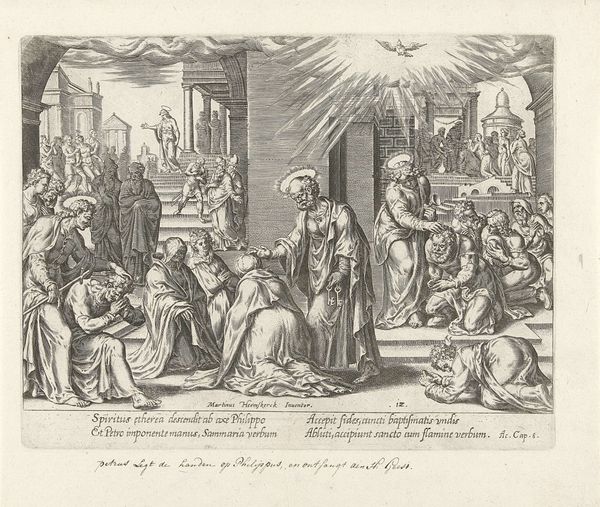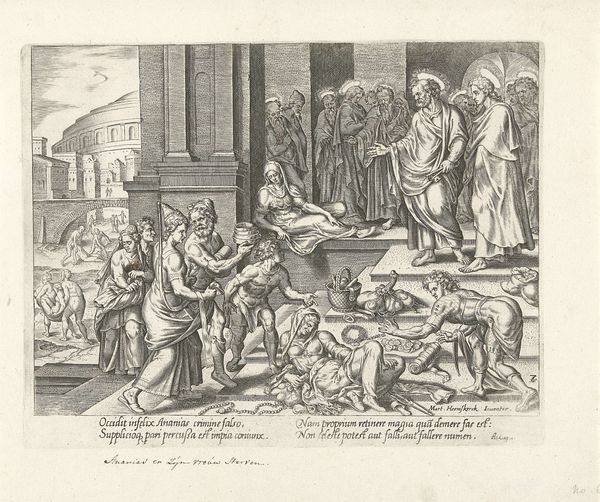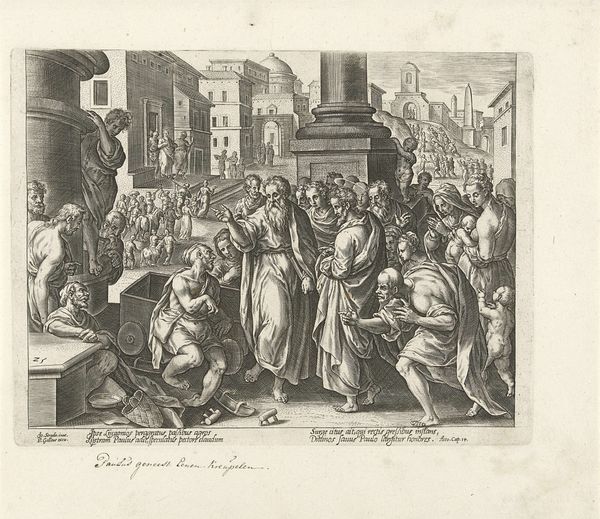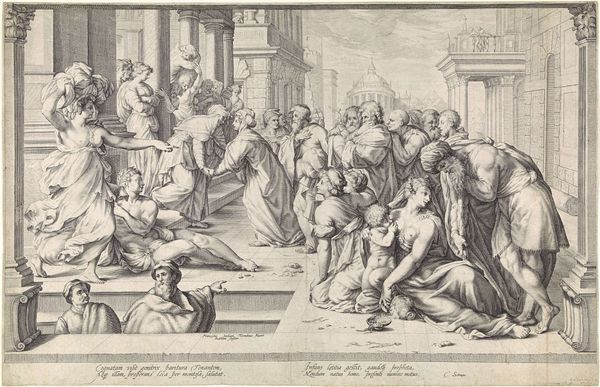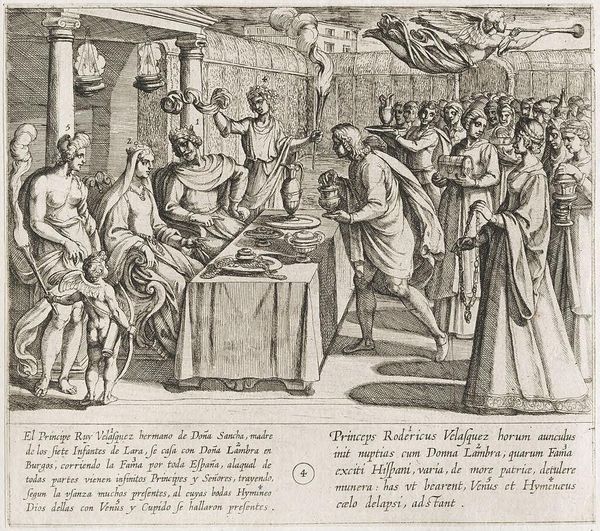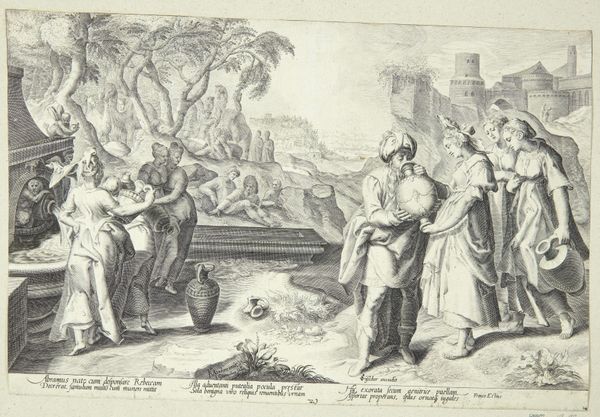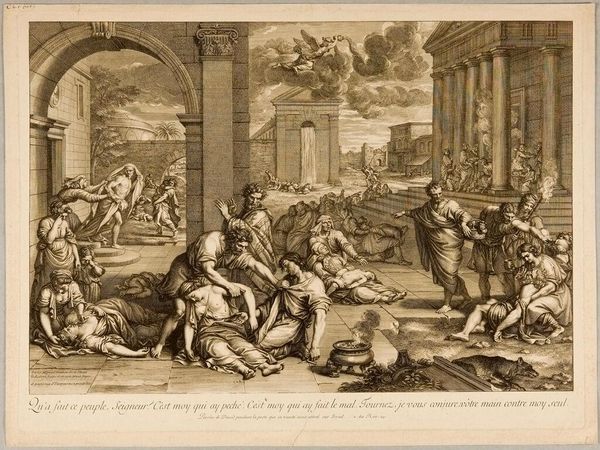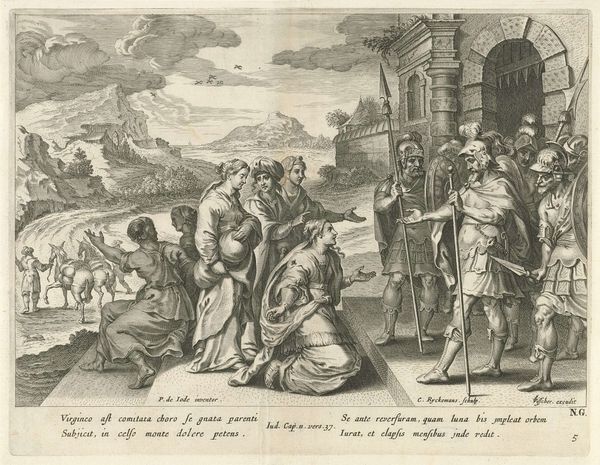
Dimensions: height 211 mm, width 272 mm
Copyright: Rijks Museum: Open Domain
Editor: Here we have Philips Galle’s “Petrus geneest zieken met zijn schaduw,” from 1582, currently housed in the Rijksmuseum. It's an engraving. What immediately strikes me is the sheer density of figures, all rendered with incredible detail in the print. How do you interpret this work? Curator: From a materialist perspective, I'm interested in how this print functions as a commodity. Consider the social context: printed images like these were reproduced and distributed widely. The means of production itself – the engraving process, the printing press – made religious narratives accessible to a broader audience than, say, a unique painted altarpiece. Think about who would be consuming such images. Editor: So, not just wealthy patrons? Curator: Precisely. And this affects the style. It is busy, almost overwhelming, focusing on a biblical narrative as propaganda to influence belief. Consider the economics of devotion. Galle is not only depicting a scene, he is manufacturing faith, on demand and reproducible. The materiality is directly linked to both devotional practice and profit motive. Editor: That’s a perspective I hadn't considered. It changes how I view the artist's role - he’s more of a manufacturer of religious sentiment. Curator: Exactly. The act of creating the image itself is labor, with market value, creating value in belief, packaged in ink and paper. The consumer engages with the print as a method to reaffirm and participate in that belief. Consider its social consumption as integral to its function. Editor: It's fascinating to consider this artwork not just as a representation of a story but as an object with a role in religious economics. Thanks! Curator: And to understand its purpose through labor that makes this object. A very important insight.
Comments
No comments
Be the first to comment and join the conversation on the ultimate creative platform.

